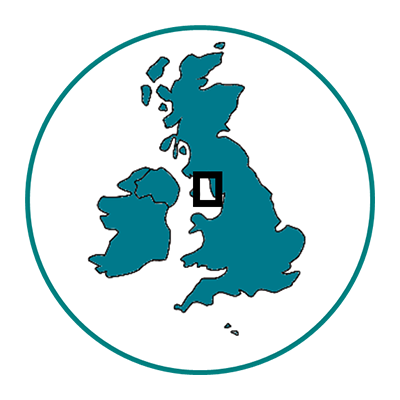
West of Walney MCZ
Intelligence Report – July 2022
West of Walney Marine Conservation Zone is an example of a complex and multi-use marine protected area.
General Key Finding
Various levels of vessel traffic from several vessel types were observed in the West of Walney marine protected area.
Vessel Tracking Key Finding
Potting and static gear were the dominant fishing vessel type in the MPA. This activity is permitted within the MPA.
Remote Sensing Key Finding
Synthetic Aperture Radar (SAR) imaging indicated some potential risk from non-compliant activity associated with mobile bottom towed gears and highlighted areas of risk.
UAV Key Finding
UAVs were able to observe and identify vessels operating in the MPA, identify markings on static gears and provide a deterrence effect. In addition to this, they can support scientific surveys of habitats and site features.
Observed Activity
| AIS Analysis Alerts: | 2 |
| Machine Learning Alerts: | 1 |
| SAR Images: | 11 |
| EO Images: | 0 |
| High Risks: | 1 |
The image below shows the UAV flight maps over the NW IFCA district, launched from the NW IFCA vessel NW PROTECTOR between 29Jun2022 and 01Jul2022.
Image A | Flights over the West of Walney MPA and Lune Deep Feature
Image B | Flights to support scientific shellfish surveys around Foulney Island and Walney Island seal colony
Image C | Gear Markings and vessel activity observations
Conclusions
SAR detections within the MPA were dominated by wind turbines, platforms, rigs, and survey vessels. Fishing vessels were detected to the southeast of the MPA with some operations encroaching into the 3 NM buffer and MPA though they remained outside the 12 NM bottom towed gear restricted area. SAR imaging can provide benefit as a surveillance tool i.e. strategic risk assessments and long term risk planning.
Vessel tracking with associated machine learning did detect potential non-compliant activity and is an effective tool for use in this MPA.
Vessel-launched UAVs have some benefit for monitoring, although they are limited in operational range due to current licensing (operating beyond visual line of sight). The presence of a UAV is likely to have a deterrence effect on potential non-compliance. They can also be used to improve patrol efficiency, checking gear markers or for scientific surveys.
Recommendations
Although satellite imagery identified a small number of risks during the monitoring period, we would recommend use over a site like this for surveillance planning and risk assessment.
Vessel track analysis and machine learning are a more informative tool for detecting non-compliance and can provide efficiencies to enforcement agencies and identify potential fishing incursions for further investigation.
Extended Findings
Over the monitoring period there was 1 high risk and 7 low risk detections identified within the West of Walney MPA and surrounding 3 NM buffer. One high risk and two low risk detections were correlated with beam trawlers operating in the area.
SAR identified that the low-risk detections were concentrated in the east and southeast of the MPA and buffer, with confirmed fishing vessel activity to the southeast of the MPA (confirmed through AIS analysis). This indicated the areas of increased risk on which to focus future intelligence and patrols was the most westerly area of the MPA around the 12 NM boundary.
Synthetic Aperture Radar (SAR) image collections were approximately split between mornings and evenings, with 5 being between 07:15-07:32 UTC and six frames between 18:57-19:09 UTC. Due to the fishing patterns exhibited by suggested vessels of concern, it is possible that SAR imagery in these time windows captured some, but not all, fishing activity.
There were a large number of detections within the MPA that were associated with the offshore energy industry – including wind turbines, accommodation platforms, rigs and support vessels which were all catalogued during the monitoring period.
The pilot concluded that SAR was able to identify vessel presence and indicate potential vessel type through size and profile analysis. However, the infrequent nature of the reported incursions into the MPA, short fishing activity duration and SAR sourcing/processing time, this tool is not best suited for enhancing enforcement in this environment but does have applications for long term monitoring and patrol planning.
Vessel tracking sources identified 3 high risk vessels with possible fishing activities inside the MPA during the monitoring period:
Machine Learning Analysis of VMS data (01Jan2022 – 16Apr2022) identified one trawling vessel with fishing speeds inside the West of Walney MPA bottom towed gear closed area.
AIS Analysis (31Mar2022-01Jun2022) identified two vessels with slow speeds inside the MPA indicating potential fishing activity in the bottom towed gear closed area.
Vessel-launched UAVs have the potential to identify and observe vessels and gear markings, as well as contributing to scientific assessments of important habitats and protected areas. Although deployments did not detect any non-compliant activity during the trial use of the Quadcopter from the patrol vessel PROTECTOR (29Jun2022-01Jul2022), it is likely that the vessels presence in the area had a deterrence effect, additionally the use of UAV’s is likely to increase the overall deterrence effect.
Risk Assessment
From SAR detections identified, there were few significant risks identified for the West of Walney MPA during the monitoring period. SAR swath analysis indicated detections of bottom towed fishing vessels to the southwest of the MPA operating within the 3 NM buffer and MPA, but outside of the 12 NM limit. The majority of vessels identified on AIS tracking data were small vessels and vessels identified as windfarm support vessels. However, AIS and VMS analysis did capture potential incidences of mobile bottom gear vessels encroaching into the MPA and byelaw areas.
Next Steps
SAR indicated a low risk of likely unauthorised vessel activity in the West of Walney MPA. Vessel tracking and SAR data identified a low risk from unauthorised vessels, although timing and frequency of SAR swaths may have been insufficient to capture infrequent, short-duration incursions by vessels with mobile bottom gears. It is important to acknowledge that SAR is unable to capture all activity over an area, and infrequent events may have gone unobserved on SAR. For this reason, SAR may be best suited in this area as a tool for highlighting areas of vessel presence and indicating potential patrol areas and support for patrol planning.
Machine Learning analysis of VMS data did identify likely fishing activity within the byelaw areas, as did analysis of AIS data, therefore potential breaches of the byelaws are occurring. It is recommended to continuing monitoring machine learning alerts in the area. It is recommended to use machine learning algorithms to detect vessels which consistently enter the MPA for short periods of time and exhibit slow speeds which may be indicative of fishing activity occurring, this information can support further investigation.
Vessel-launched UAVs are likely to be a useful complementary tool to established enforcement patrols and scientific surveys.


